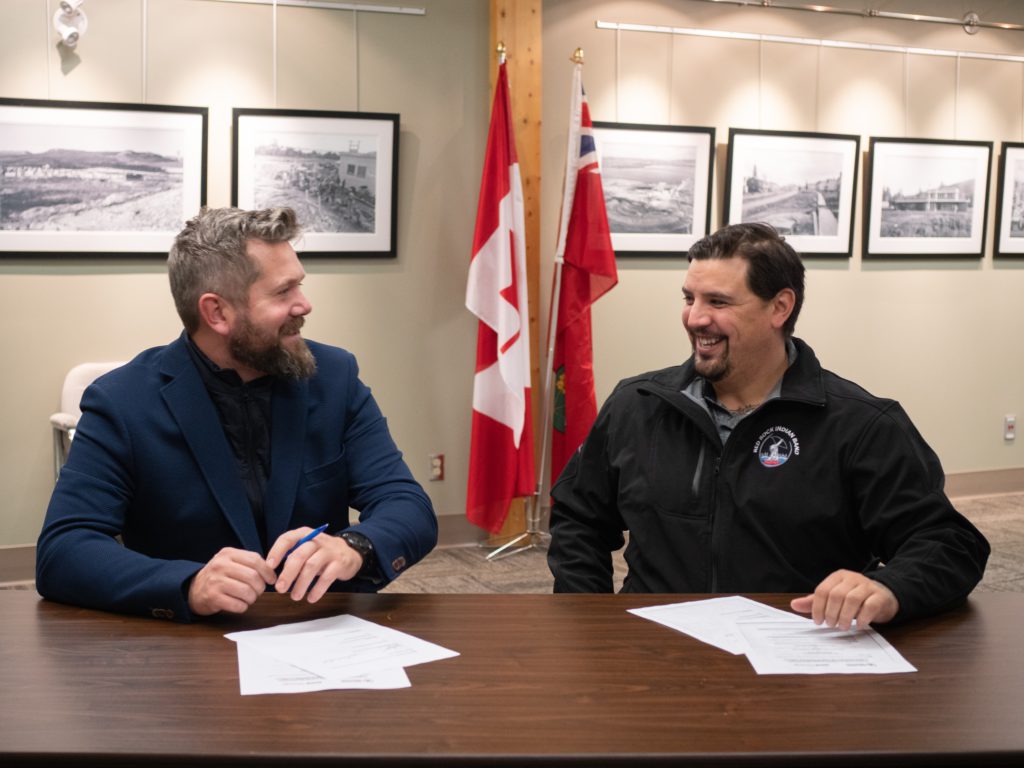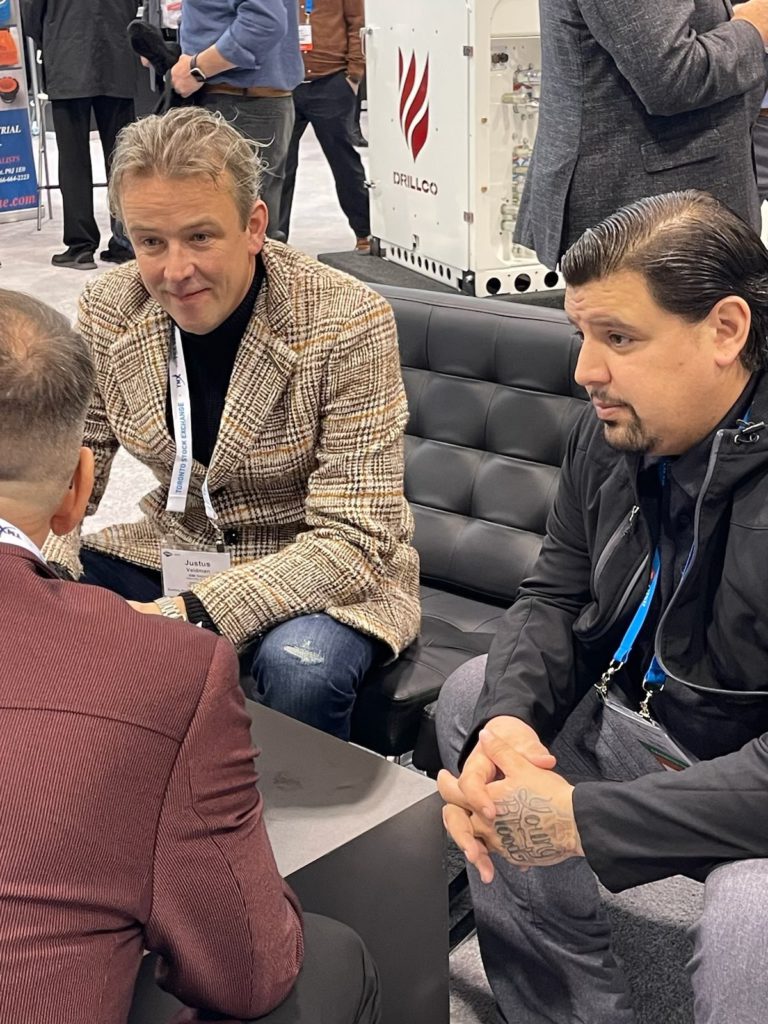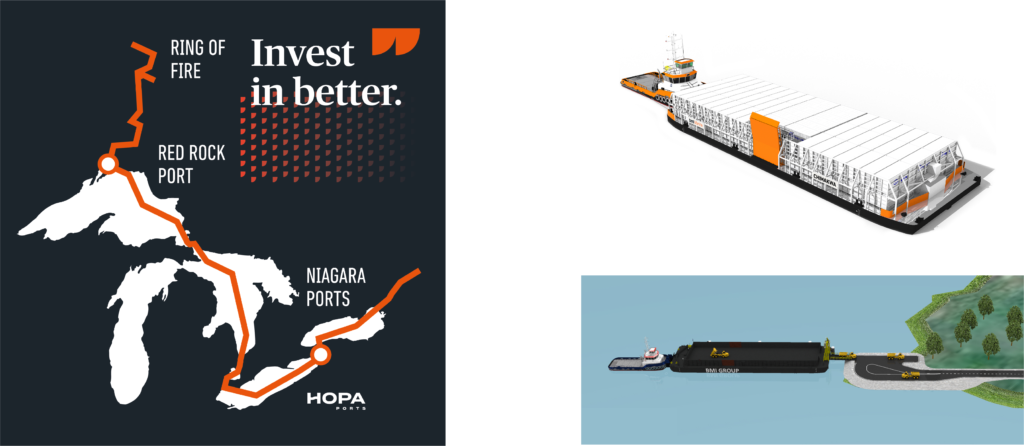A beautiful partnership helps develop the logistics of the Ring of Fire: A First Nations heavy-cargo port in northern Ontario
Mining companies require specialized transportation services for the delivery of heavy equipment, machinery, and parts to mine sites. They also need outbound logistics solutions to transport the mined commodities such as coal, concentrates, metals, and minerals. Multimodal logistics involving trucks, trains, and vessels are critical for the global mining supply chain. These include providers of mining logistics solutions and services such as cargo shipping, freight forwarding, heavy lifting, break bulk services, pre-shipment, and post-shipment services, as well as logistics planning, management, and consultancy services.
Mining logistics solutions and services include, but not limited to, the following:
> Cargo shipping and contracting
> Heavy-lift and towage services
> Heavy machinery shipping services
> Customized ore wagons and bottom and
side dumpers
> Customs clearance, container handling,
warehousing, and transit services
> On-board load and discharge supervision
> Helicopter transport service
> Customized coach, bus, and transport
services for mining site personnel
> Logistics consultancy, planning, survey,
and project management
The Ring of Fire development requires comprehensive logistics services and solutions to enable smooth transportation of materials from mines, processing plants, and inventories to railways, ports, ships, and finally to the destination markets. The CEO of Ring of Fire Metals, Kristan Straub, recently estimated the value of minerals in the region at around $90 billion. Also recently, Ontario mines minister estimated the Ring of Fire could be worth $1 trillion (a figure critics call exaggerated).
As mining companies look for logistics solutions that are reliable, agile, and cost-efficient, as well as offer increased transparency and co-ordination to optimize production planning and supply chain efficiency, the BMI Group, known for their restorative state-of-the-art development experience, recently signed a memorandum of understanding (MOU) that will allow them to explore the redevelopment of lands formerly used by a linerboard mill in Red Rock, Ont., as a deep-water port that would be the northernmost heavy-cargo port on the Great Lakes.
The Red Rock Integrated Marine Supply Chain (RRIMSC) is a partnership between The BMI Group and the Red Rock Indian Band that aims to connect the Great Lakes seaway to existing transportation infrastructure from the Red Rock port through to the Trans-Canada Highway and the northern community infrastructure corridor.
The Red Rock Indian Band (RRIB) is an Ojibwe First Nation in northwestern Ontario, Canada. The Council is an independent member of Union of Ontario Indians, a provincial territorial organization. As of November 2020, the total registered population of the Red Rock Indian Band is 2,089, with 1,789 members residing off-reserve.

During PDAC 2023, I caught up with Chief Marcus Hardy of the Red Rock Indian Band and Justus Veldman, one of the managing partners of The BMI Group, to talk about the importance of the new partnership and what it represents to the local community as well as the logistics of the Ring of Fire.
“We are stewards of the land. The importance of this partnership is to really forge a good relationship with the industry for the success of both the townships in the area, our First Nations,
and the people.” Chief Marcus Hardy, Red Rock Indian Band
Chief Hardy started by clarifying that the Red Rock Indian Band is located on the Lake Helen Reserve #53A, approximately near the junction of Highways 11 and 17. It consists of two sections, Parmachene Reserve 53 and Lake Helen Reserve 53A. The total area covered by these two reserves is approximately 3.8 km2. Red Rock is on the northernmost shore of Lake Superior, just off the Trans-Canada highway, about 110 km northeast of Thunder Bay.
“We have been moved a few times in our history. One of the original spots where we lived would be at the site that The BMI Group is looking to develop,” said Chief Hardy.

“The BMI Group is myself and my two brothers that make up Brothers Management Inc. We are based in southern Ontario. We have land holdings throughout northern Ontario with a specific focus on abandoned and/or underutilized industrial sites, and an even stronger focus on the abandoned paper industry mills,” explained Justus Veldman.
Veldman added that the project is very difficult because the site was a mess. For the last four to five years, The BMI Group has been trying to get the environmental reclamation funding in place with a goal of developing a deep seaport for the Ring of Fire.
“Our partnership with the Red Rock Indian Band is fantastic and really solidifies our commitment to work with local communities. In fact, this is not about The BMI Group; it is about the community that we will develop in, and giving back as much as we take is our philosophy in business,” said Veldman.
According to Chief Hardy, it is important to build up, train, and enrich the lives of First Nations membership with meaningful employment opportunities and careers that help them move forward as well as their children and their children’s children. The project will help revitalize the area with the development of this port. It will bring more jobs, housing development, and business opportunities.
“Back in the day when the mills were active when I was younger, the town was busy and flourishing, and everyone had a good life. There were always activities going on. Overnight, all that changed. The mill was closed in 2006 and most of the buildings were removed. We have the capacity, our people have the capability, and we want to give people a good life,” Chief Hardy explained.
He added that it is going to help ease the problems of the supply chain for the Ring of Fire and for the mining industry in northern Ontario in general.

The timeline
For the port to start working and ease supply chain and logistics problems, Veldman explained that they are at PDAC 2023 to encourage cargo to come in and to talk to mine developers. “We think that in the first five years of the port, there will be a lot of oversized construction and mining equipment. And then over time, the commodities will start to come out of the Ring of Fire. Of course, the first five to 10 years will be about building the mining infrastructure,” said Veldman.
He added, “The partnership brings together Neptune Marine and The BMI Group’s experience with the Hamilton-Oshawa Port Authority (HOPA) in Niagara to develop a shipping and transload solution to support mining, First Nations, and heavy industry in northern Ontario. Our group operates a multimodal hub in Niagara at HOPA Ports, and facilities across Canada.”
Comments